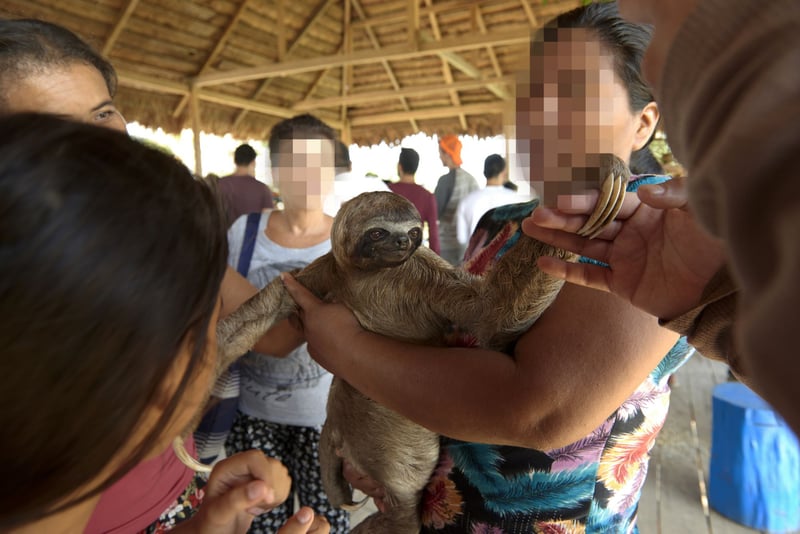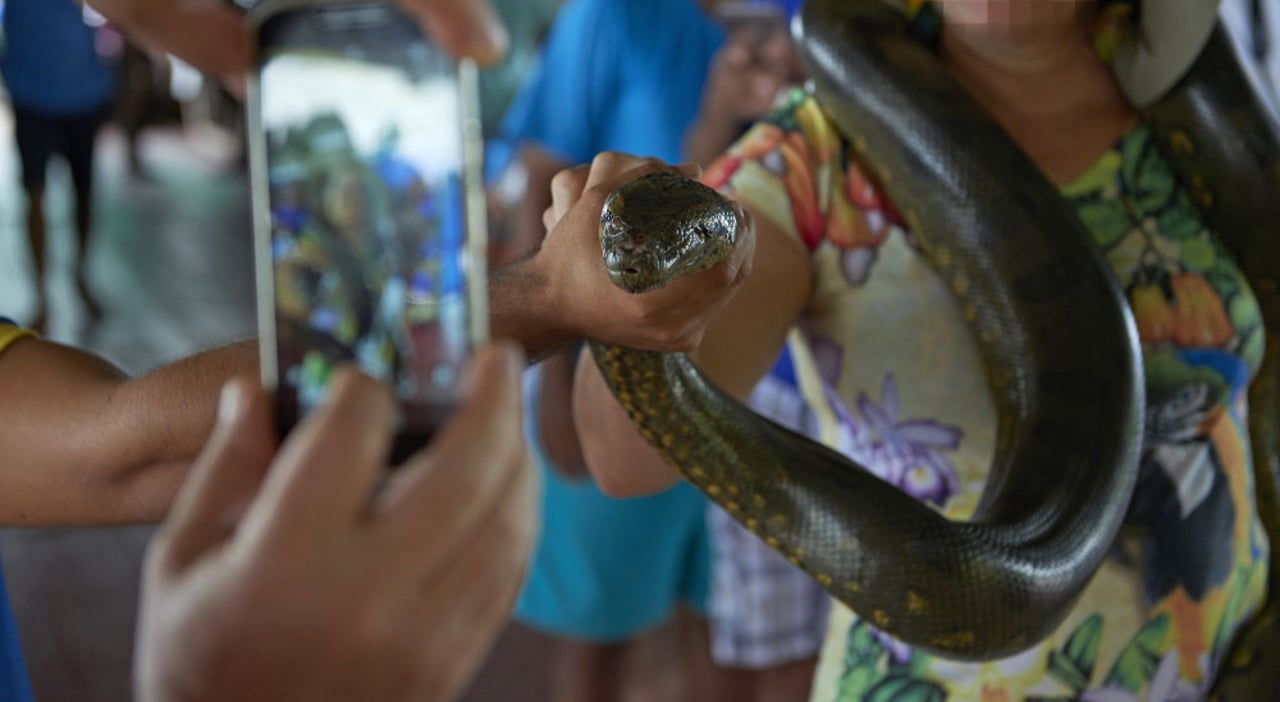
Investigating the illegal wildlife selfie trade in the Amazon
News
Hear about the investigations that exposed this new alarming trend in the tourism industry – with National Geographic reporter Natasha Daly and our global head of wildlife campaigns Cassandra Koenen.
The Amazon rainforest attracts tourists because it’s home to one of the most biodiverse places on Earth. But sadly, the growing eagerness to get close to wild animals is causing severe suffering.
Wild animals are being illegally captured, caged and brought out daily to be used as photo props for tourists to take selfies with – which are shared widely on social media.
National Geographic reporter Natasha Daly spent several months investigating and writing a special report on the impact of wildlife selfies, visiting the small villages along the Amazon River where tour agencies funnel tourists in search of guaranteed wildlife encounters.
Our own year-long investigation into the cruel wildlife tourist activities across Latin America, as well as the use of ground-breaking social listening technology, showed the prevalence of wildlife selfies across social media— a growing deadly threat to wild animals.
Hear their discussion as they respond to questions about their investigations:
Cruelty is becoming normalized
Most tourists traveling to the Amazon want to see wildlife and this choice can have a powerful impact on the welfare of local animals. As Natasha says in her article: “tourists generally have two options for experiencing this bounty: the authentic way or the quick way”.
Tourists choosing to pay for a picture with a sloth, toucan, anaconda or any other wild animal must be aware about what is going on before and after the tourists leave.
Sadly, the cruelty that makes these animals submissive enough to use for wildlife selfies is entirely invisible to the unsuspecting tourist.
Local animals, like this anaconda, are taken from the wild and used for harmful selfies with tourists, in Manaus, Brazil.
After their trip, tourists go home and share these pictures on social media, encouraging others to follow – creating a cycle of cruelty.
Social media is glorifying cruel wildlife activities
Since 2014, the number of wildlife selfies posted on Instagram has increased by 292%. Nearly half of these involve a level of animal suffering. They show people hugging, holding, or inappropriately interacting with the wild animal captured in the photo.
These pictures, featured prominently across Instagram and other social media, don’t show the cruelty behind the lens. This is why it’s so important to spread awareness and education so that we can stop the extreme suffering behind seemingly harmless tourist photos.
How we can make a lasting change
From our investigations, we learned that people want to see animals in the wild. They want a genuine wildlife experience but don’t know about the cruelty that takes place behind the scenes at these ‘quick wildlife activities’.
Authentic wildlife experiences exist and they can benefit the local economy without hurting the wildlife.
Education is key and we are in discussions with Instagram about how they can help educate their 800 million users about the difference between cruel wildlife selfies and safe ones.
Sign our Wildlife Selfie Code and help us show Instagram just how many people want to filter cruelty out of the picture.
By signing the code, you are committing to cruelty-free selfies and will help grow our voice when speaking out against cruel wildlife tourism.
